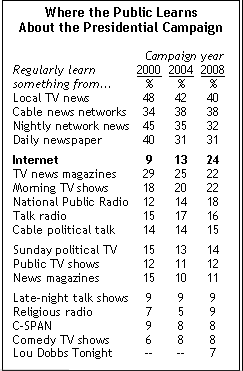 A new study (pdf) published by the Pew Internet & American Life Project has found that there is a growing digital divide across America.
A new study (pdf) published by the Pew Internet & American Life Project has found that there is a growing digital divide across America.
John B. Horrigan’s analysis of America’s use of Web 2.0 and information and communications technology in the broader sense shows that whilst a reasonable number of Americans are embracing new technology and Web 2.0, a disturbing number are either not getting the message, or are choosing not to participate.

31% of Americans are considered to be “Elite Tech Users”, where as 49% have few tech assets, either engaging with the online world only on occasion, or not at all.
8% of people are considered to be “omnivores” which the study describes as being Web 2.0 devotes, highly engaged with video online and digital content; “creative participants in cyberspace”.
Is the switch off factor strictly a question of Age? The study found that the Top 8% are young, ethnically diverse, and mostly male (70%). The median age of the Top 8% is 28 with more than half of them under the age of 30. The bottom 15% was not surprisingly older, with a median age of 64 – and as a group reported the lowest levels of household income. And yet this group isn’t entirely switched off: 82% watch TV everyday and 76% have cable or satellite service, and collectively had the highest levels of watching TV or listening to radio of any group in the study; it’s just that there not using Web 2.0.
It would be easy to conclude that as an industry our message is not getting across as well it should be. Yet from such figures I’m actually drawn to the fact that such a high reported figure for those not engaging is an opportunity waiting to happen. There can be no market saturation until such time the 31% blows out to something closer to 100%.
As famously demonstrated with the Nintendo Wii, targeting a non-hardcore market can and does have its rewards.